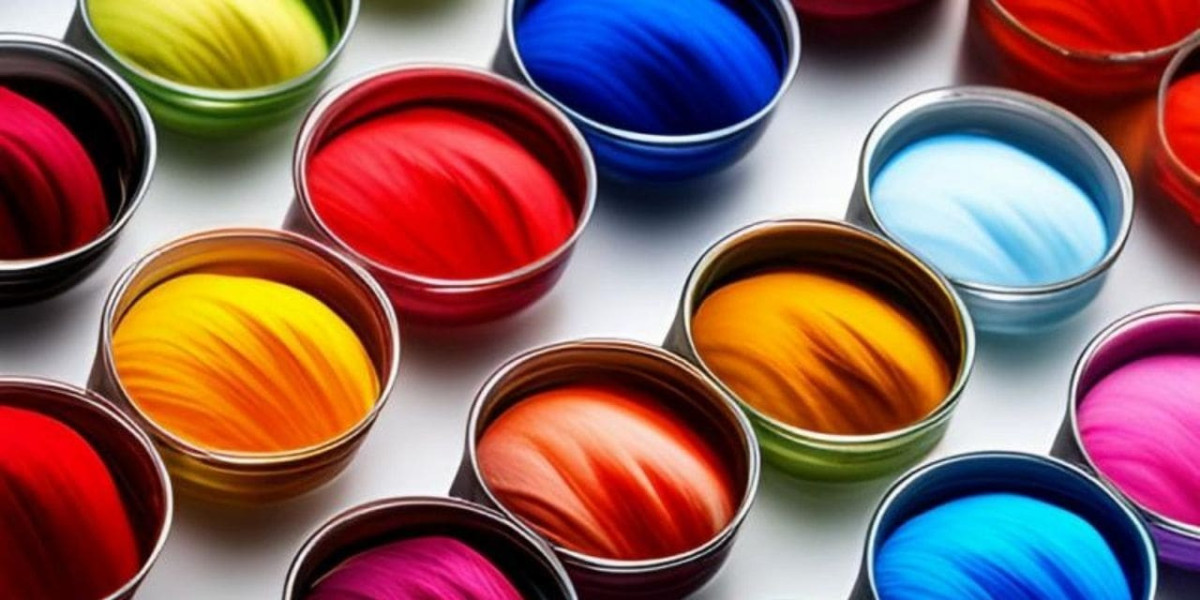Acid dyes represent an essential category of synthetic dyes characterized by their application primarily to protein fibers such as wool, silk, and nylon. These dyes are water-soluble and are named for their application under acidic conditions, enabling strong ionic bonds with fiber molecules. Acid dyes are widely favored in the textile industry due to their vibrant color range, excellent lightfastness, and wash-fastness properties. They are integral in producing bright, vivid shades on delicate fibers that other dye classes cannot efficiently color. Understanding the chemical structure, manufacturing process, and varied applications of acid dyes offers valuable insights into their ongoing importance in global s.
Chemical Structure and Mechanism of Acid Dye Absorption on Textile Fibers
Acid Dyes consist mainly of acidic groups such as sulfonic acid or carboxylic acid that facilitate their solubility in water. These acidic groups allow the dye molecules to form ionic bonds with the basic amine groups present in protein fibers. The dyeing process takes place in an acidic bath, typically using acetic acid or formic acid, which promotes increased fiber protonation. This protonation enhances the attraction between the fiber and the dye ions, resulting in strong bonding and improved color retention. The molecular structure of acid dyes often includes azo, anthraquinone, or other chromophore groups responsible for their distinctive colors. This chemical specificity enables acid dyes to cover a broad spectrum of colors ranging from bright reds and blues to deep yellows and purples without damaging the delicate fibers.
Key Industrial Applications Driving Demand for Acid Dyes in Textile and Beyond
The highest demand for acid dyes emanates from the textile industry, particularly for dyeing animal-based fibers like wool and silk. These fibers, due to their protein composition, exhibit excellent affinity to acid dyes, resulting in superior penetration and colorfastness. Beyond traditional textile applications, acid dyes are extensively used in leather processing, paper coloring, and even in cosmetics, owing to their brilliant shades and safe application profiles. Additionally, acid dyes play an important role in scientific and educational applications where high-intensity coloration is required, such as biological staining. The ability to produce highly vibrant and lasting colors at relatively low cost and minimal environmental footprint has made acid dyes a preferred choice among manufacturers.
Purchasing Acid Dyes: Considerations for Quality, Cost, and Supplier Reliability
When procuring acid dyes, businesses must consider several factors to ensure consistent product quality and cost-effectiveness. Quality parameters include dye purity, color yield, and fastness properties such as resistance to washing, light, and rubbing. Additionally, compliance with environmental and safety standards forms a critical part of supplier evaluation, particularly given increasing regulatory scrutiny worldwide. Pricing often varies based on dye type, color intensity, and scale of purchase. Establishing relationships with reliable suppliers who offer detailed technical support and timely delivery is essential for uninterrupted production cycles. Bulk purchasing options and availability of customized dye formulations can offer additional commercial advantages for textile manufacturers and dyeing houses aiming for differentiation.
Emerging Innovations Impacting Acid Dye Production and Application Techniques
The acid dye segment continues to undergo transformation driven by technological advancements in dye chemistry and application methods. Innovations such as digital printing and jet dyeing are enabling faster, more precise dye application with minimal wastage. Research into eco-friendly dyeing auxiliaries and lower-temperature fixation processes supports sustainability goals without compromising performance. Furthermore, the development of novel acid dye molecules with enhanced affinity and durability characteristics opens new avenues for high-end textile applications. Biotechnological approaches are also being explored to produce bio-based acid dyes, reducing dependence on petrochemical raw materials. These innovations collectively expand the potential for acid dyes across various industries, ensuring their relevance in the evolving global colorant landscape.
Get More Insights on Acid Dyes
Get This Report in Japanese Language -酸性染料
Get This Report in Korean Language - 산성 염료
Read More Articles Related to this Industry –
Sustainable Agrochemicals: Innovations for Eco-friendly Farming
Types of Agrochemicals and Their Role in Modern Farming
The Impact of Agrochemicals on Soil Health and Crop Yield
About Author:
Vaagisha brings over three years of expertise as a content editor in the market research domain. Originally a creative writer, she discovered her passion for editing, combining her flair for writing with a meticulous eye for detail. Her ability to craft and refine compelling content makes her an invaluable asset in delivering polished and engaging write-ups.
(LinkedIn: https://www.linkedin.com/in/vaagisha-singh-8080b91)


